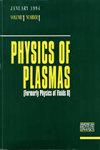惯性约束聚变实验的缩放和点火数据驱动预测
IF 2.2
3区 物理与天体物理
Q3 PHYSICS, FLUIDS & PLASMAS
引用次数: 0
摘要
国家点火装置(NIF)在惯性约束聚变(ICF)方面取得的最新进展,包括点火和能量增益,得益于实验与高保真模拟之间的紧密结合。无论是模拟还是实验,都无法单独完全约束 ICF 内爆的行为,这意味着爆前和爆后模拟研究必须结合实验数据才可靠。将过去的数据与模拟联系起来,对即将进行的设计进行预测,并量化这些预测的不确定性,一直是 ICF 研究中面临的挑战。我们开发了一种数据驱动的预测和不确定性量化方法,它将大型模拟集合与贝叶斯推理和深度学习相结合。该方法为关键性能参数的统计分布建立了一个预测模型,该模型由过去的实验和物理模拟共同提供信息。预测分布捕捉了实验不确定性、专家先验、设计变更和射击变化的影响。我们利用这一新功能预测了 2.05 兆焦耳(与 1.9 兆焦耳相比)驱动的混合动力-E 发射之间的点火概率提高了 10 倍,并根据随后的实验验证了我们的预测。我们描述了新的贝叶斯射击后和预测能力,讨论了它们在 NIF 点火中的应用并验证了结果,最后研究了数据稀疏性对预测结果的影响。本文章由计算机程序翻译,如有差异,请以英文原文为准。
Data-driven prediction of scaling and ignition of inertial confinement fusion experiments
Recent advances in inertial confinement fusion (ICF) at the National Ignition Facility (NIF), including ignition and energy gain, are enabled by a close coupling between experiments and high-fidelity simulations. Neither simulations nor experiments can fully constrain the behavior of ICF implosions on their own, meaning pre- and postshot simulation studies must incorporate experimental data to be reliable. Linking past data with simulations to make predictions for upcoming designs and quantifying the uncertainty in those predictions has been an ongoing challenge in ICF research. We have developed a data-driven approach to prediction and uncertainty quantification that combines large ensembles of simulations with Bayesian inference and deep learning. The approach builds a predictive model for the statistical distribution of key performance parameters, which is jointly informed by past experiments and physics simulations. The prediction distribution captures the impact of experimental uncertainty, expert priors, design changes, and shot-to-shot variations. We have used this new capability to predict a 10× increase in ignition probability between Hybrid-E shots driven with 2.05 MJ compared to 1.9 MJ, and validated our predictions against subsequent experiments. We describe our new Bayesian postshot and prediction capabilities, discuss their application to NIF ignition and validate the results, and finally investigate the impact of data sparsity on our prediction results.
求助全文
通过发布文献求助,成功后即可免费获取论文全文。
去求助
来源期刊

Physics of Plasmas
物理-物理:流体与等离子体
CiteScore
4.10
自引率
22.70%
发文量
653
审稿时长
2.5 months
期刊介绍:
Physics of Plasmas (PoP), published by AIP Publishing in cooperation with the APS Division of Plasma Physics, is committed to the publication of original research in all areas of experimental and theoretical plasma physics. PoP publishes comprehensive and in-depth review manuscripts covering important areas of study and Special Topics highlighting new and cutting-edge developments in plasma physics. Every year a special issue publishes the invited and review papers from the most recent meeting of the APS Division of Plasma Physics. PoP covers a broad range of important research in this dynamic field, including:
-Basic plasma phenomena, waves, instabilities
-Nonlinear phenomena, turbulence, transport
-Magnetically confined plasmas, heating, confinement
-Inertially confined plasmas, high-energy density plasma science, warm dense matter
-Ionospheric, solar-system, and astrophysical plasmas
-Lasers, particle beams, accelerators, radiation generation
-Radiation emission, absorption, and transport
-Low-temperature plasmas, plasma applications, plasma sources, sheaths
-Dusty plasmas
 求助内容:
求助内容: 应助结果提醒方式:
应助结果提醒方式:


